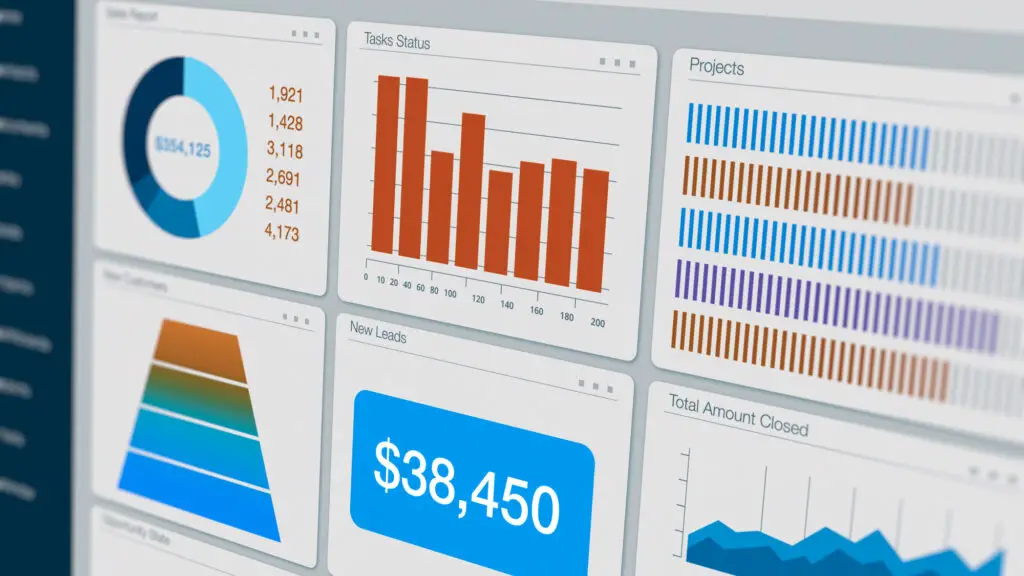CRM (Customer Relationship Management) is an essential tool for businesses in the beauty and wellness industry. It allows them to establish and build meaningful relationships with their customers, provide personalized services, and increase the likelihood of repeat purchases.
CRM systems can track customer purchases, send special offers, and manage client follow-up tasks. These functionalities help businesses better understand their customers and acquire insights into improving their products and services.
This article explores the applications and potential benefits of CRM within the beauty and wellness industry.
1. Personalized marketing and communication
Personalized marketing and communication have become increasingly popular in the beauty and wellness industry. This strategy involves customizing content to fit customer needs, preferences, and interests.
Thankfully, CRM helps greatly in this strategy by collecting data that can help improve a business with a combination of advanced features. Some of them are appointment scheduling, customer management, inventory management, marketing automation, and reporting and analytics.
Moreover, CRM can further aid with personalized marketing and communication through email marketing, social media management, website personalization, and customer support. With these, businesses can provide customers a more tailored experience, leading to higher satisfaction and loyalty.
Suppose you’re running a medical spa. If a group of your customers finds it difficult to understand their wellness program or package, you can reach out to them with helpful information through a med spa email marketing campaign.
The information you’ll provide in the campaign can be written or developed in a way your customers can easily digest and follow. And along with this message, you can also upsell your other products they may appreciate.
2. Customer segmentation and profiling
The importance of CRM in the beauty and wellness industry cannot be overstated. It gives businesses a platform to understand their customers better, develop marketing strategies more effectively, and improve purchasing decision predictions tremendously. This platform also allows business owners to perform customer segmentation and profiling.
Customer segmentation is the process of segregating a customer base into groups according to shared characteristics, such as demographics, behavior, or interests. Meanwhile, customer profiling is the process of collecting and analyzing data about customers to create a detailed profile of each individual or group. With these two processes, businesses can gain insights into customer motivations, product preferences, channel preferences, and other critical information.
Suppose a makeup company has segmented its customers based on interest. In that case, it can focus on marketing its products associated with or relevant to a specific interest of a segmented group. If one group likes to go to the gym or swim, the makeup company can push more waterproof and sweatproof makeup on them.
The same goes for profiling. Knowing a customer more allows a business to give them personalized services or products and apply targeted marketing strategies to them.
3. Utilization of machine learning and business intelligence
One of the core technical functionalities of CRM is data collection. It allows a system or a business owner to make business decisions backed by business intelligence (BI). With it, businesses can take advantage of unsupervised machine learning algorithms like self-organizing maps (SOM) and K-means.
To those unfamiliar, business intelligence is a set of processes and tools used for gathering, analyzing, and presenting data to help companies make informed business decisions. On the other hand, self-organizing maps (SOMs) and K-means are algorithms used together with CRM to perform customer segmentation, product recommendation, fraud detection, risk assessment, and demand forecasting.
These two algorithms are used in performing RFM (Recency, Frequency, and Monetary value) analysis with the aid of other BI tools. With them, a business can develop an effective and precise RFM model for customer purchase behavior, which helps segment customers to develop marketing campaigns and customer retention strategies.
For example, a beauty salon that is slowly losing business can understand what’s going on with its customers, market, and operations with an RFM analysis. They can use this insight to decide to send special offers to customers who have not been back in a while in an attempt to win them back.
By utilizing sophisticated machine learning technologies with a reliable CRM system, organizations stand poised to reap significant rewards thanks to an intimate understanding of their target market’s needs.
4. Loyalty Programs
Loyalty programs offer physical rewards such as discounts or gifts, which help companies differentiate their brand from competitors. Additionally, they allow companies to personalize communication by collecting additional customer information using quizzes and surveys through CRM software.
This data can then be used to create tailored marketing messages more relevant to each customer’s needs. Early access, gamification, and community features have proven effective ways of creating loyal customers within the beauty industry.
Meanwhile, when implementing a sales drive and loyalty program alongside an efficient inventory management system, businesses in the beauty industry will have better insight into what incentives work best for their target audience thanks to CRM. Companies can take advantage of all the data CRM collected when designing their loyalty programs, as it allows the optimization of their offerings based on current trends in the market and customer feedback received on past campaigns.
Furthermore, businesses must consider factors such as social media engagement when setting up a loyalty program. After all, modern shoppers often interact with brands online rather than offline purchases alone.
Data gathered from inventory management systems and loyalty programs provide valuable insights into how consumers shop within the beauty industry today. It also helps businesses identify areas where improvements could be made to increase sales volumes and customer lifetime value.
Takeaway
CRM applications in the beauty and wellness industry can help businesses better segment their customers, take advantage of machine learning and business intelligence, and develop sales drive and loyalty programs.
Having a CRM system in a business ultimately leads to higher sales and profits and improved customer relationships. By utilizing all of its features, companies in the beauty and wellness sector can capitalize on opportunities to increase revenue while improving overall customer service quality.










0 Comments